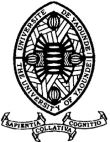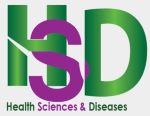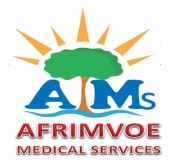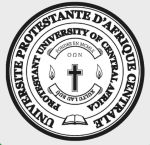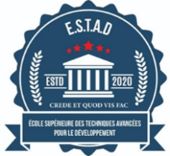Diagnosis, Management and Evolution of Hyperthyroidism in Tivaouane (Senegal)
Aspects Diagnostiques, Thérapeutiques et Évolutifs des Hyperthyroïdies à Tivaouane (Sénégal)
DOI:
https://doi.org/10.5281/hra.v3i3.6490Keywords:
Hyperthyroidism, Internal Medicine, Tivaouane, SénégalAbstract
RÉSUMÉ
Introduction. L’hyperthyroïdie est fréquente dans la pratique quotidienne des médecins au Sénégal. L’objectif de cette étude est de décrire cette affection dans notre pratique. Méthodologie. Il s’agissait d’une étude prospective, descriptive et analytique sur une période de 03 ans allant de 2020 à 2023 portant sur les patients suivis en consultation de médecine interne de l’hôpital Abdou Aziz Sy Dabakh de Tivaouane. Les variables d’études étaient les aspects épidémiologiques, diagnostiques, thérapeutiques et évolutifs. Résultats. Nous avons enregistré 103 patients souffrant d’hyperthyroïdie sur 1138 reçus en consultation endocrinologique soit une prévalence de 9%. L’âge moyen des patients était de 32,4 ans [8 – 63 ans]. La tranche d’âge 21-40 ans était la plus représentée (53%) avec un sex-ratio de 0,12 (H/F). Le délai moyen de consultation était de 7,6 mois. Les motifs de consultation étaient l’altération de l’état général (80%) et la palpitation (82%). La maladie de Basedow était l’étiologie la plus fréquente (81%) suivie de la thyroïdite de Dequervain (4%) et d’Hashimoto (4%). Le traitement par antithyroïdien de synthèse (ATS) a été instauré chez 95% des patients dont le carbimazole était la molécule d’ATS le plus prescrite à 93%. La durée moyenne du traitement d’attaque était de 4,47 mois avec une dose moyenne de 39,3 mg par jour. Sur le plan évolutif le contrôle des hormones thyroïdiennes à 3 mois de suivi montrait une euthyroïdie biologique chez 48% des patients, une persistance de l’hyperthyroïdie chez 42% et une hypothyroïdie chez 10% des patients avec un taux de pertes de vu de 25% au bout de 12 mois de suivi. Conclusion. L’hyperthyroïdie a une évolution satisfaisante si elle est traitée de manière appropriée avec cependant un taux de rechutes élevé.
ABSTRACT
Introduction. Hyperthyroidism is common in the daily practice of physicians in Senegal. The aim of this study is to describe this condition in our practice. Methodology. This was a prospective, descriptive cross-sectional study over a 03-year period from 2020 to 2023 of patients followed up in internal medicine consultations at the Abdou Aziz Sy Dabakh hospital in Tivaouane. Study variables were epidemiological, diagnostic, therapeutic and evolutionary aspects. Results. We recorded 103 patients suffering from hyperthyroidism out of 1138 seen in endocrinology consultation, i.e. a prevalence of 9%. The mean age of patients was 32.4 years [8-63 years]. The 21-40 age group was the most represented (53%), with a sex ratio of 0.12 (M/F). The average consultation time was 7.6 months. Reasons for consultation were mainly alteration of general condition (80%) and palpitation (82%). Graves' disease was the most common aetiology (81%), followed by Dequervain's thyroiditis (4%) and Hashimoto's thyroiditis (4%). Treatment with synthetic antithyroid drugs (STDs) was initiated in 95% of patients, of whom carbimazole was the most prescribed STD molecule (93%). The average duration of initial treatment was 4.47 months, with an average dose of 39.3 mg per day. Thyroid hormone monitoring at 3 months' follow-up showed biological euthyroidism in 48% of patients, persistent hyperthyroidism in 42% and hypothyroidism in 10% of patients, with a loss of sight rate of 25% at 12 months' follow-up. Conclusion. Hyperthyroidism develops satisfactorily if treated appropriately, although the relapse rate is high.
References
1. Diop Dia A, Gueye Dia D, Tall C T, et al. Les Hyperthyroïdies à Saint-Louis du Sénégal : Prise en charge diagnostique et thérapeutique: Hyperthyroïdie à Saint- Louis. Sciences de la santé. 2022; 23(3) : 30-33
2. Koffi DP, Fagnidi F, Lokrou A et al. Les Hyperthyroïdies à Abidjan : Aspects cliniques, biologiques, thérapeutiques et évolutifs à propos de 399 cas. Sciences de la santé. 2019; 20(6) :23-26
3. Amadou Kaké, M M Diallo, Djibril Sylla et al. Pathologie thyroïdienne au Centre Hospitalier Universitaire de Conakry en Guinée. revue africaine de médecine interne. 2020 ; 7 : 2-1.
4. Bayar, Mzabi A, Rezgui A et al. Hyperthyroïdie dans un service de médecine interne. Annales d'Endocrinologie. 2015 ; 76(4) : 433-434.
5. Bernard Goichot, Bouée S, Castello-Bridoux C et al. Survey of clinical practice patterns in the management of 992 hyperthyroid patients in France. European Thyroid Journal. 2017; 6:152–159.
6. Brah S, Mahamane Sani M A, Daou M et al. Les Dysthyroïdies dans le Service de Médecine Interne de l’Hôpital National de Niamey – Niger. Sciences de la santé. 2016; 17(4) : 36-40
7. M Bah. Hyperthyroïdie à l’hôpital du Mali. Annales d'Endocrinologie. 2014; 75(5-6) : 499.
8. Lee SY, Pearce EN. Hyperthyroidism: A Review. JAMA. 2023; 330(15):1472-1483.
9. B. Corvilain. Les hyperthyroïdies subcliniques : du diagnostic à la prise en charge. Revue médicale de Bruxelles. 2012 ; 33 : 241-255.
10. Portmann L, Gomez F, Flattet A. TSH "inappropriée": des situations banales à l'adénome hypophysaire à TSH (adénome thyréotrope). Revue médicale de Suisse. 2012; 8(362) : 2187-91.
11. Aydi Z, I. Rachdi, H. Zoubeidi, et al. Adénome hypophysaire thyréotrope : une nouvelle observation. Annales d'Endocrinologie. 2020; 80(4) : 327.
12. Vadiveloo T, Donnan PT, Cochrane L et al. The thyroid epidemiology, audit, and research study (tears): the natural history of endogenous subclinical hyperthyroidism. Journal of Clinical Endocrinology and Metabolism. 2011; 96(1) :1-8.
13. Sidibé A.T, M. Dembélé, A.S. Diarra et al. Hyperthyroïdies chez l’enfant. Expérience d’un service de médecine interne au Mali. Annales d'Endocrinologie. 2007;68, 2:177-8.
14. Asgeir haraldsson, Sigurdur Th. Gudmundsson, Gudjon Laruson et al. Thyrotoxicose en Islande 1980-1982. Journal of internal medicine. 1985 ; 217(3) : 253-258
Downloads
Published
How to Cite
Issue
Section
License
Copyright (c) 2025 Abo Ibrahima Hady Thiam, Bachir Mansour Diallo, Fulgence Abdou Faye, Sow Aboubakry, Baba Nana Mamoudou, Ibrahima Dieye, Adama Wade, Adou Aziz Ly, Adama Berthé, Papa Souleymane Touré

This work is licensed under a Creative Commons Attribution-NonCommercial-NoDerivatives 4.0 International License.
Authors who publish with this journal agree to the following terms:
- Authors retain copyright and grant the journal right of first publication with the work simultaneously licensed under a Creative Commons Attribution License CC BY-NC-ND 4.0 that allows others to share the work with an acknowledgement of the work's authorship and initial publication in this journal.
- Authors are able to enter into separate, additional contractual arrangements for the non-exclusive distribution of the journal's published version of the work (e.g., post it to an institutional repository or publish it in a book), with an acknowledgement of its initial publication in this journal.
- Authors are permitted and encouraged to post their work online (e.g., in institutional repositories or on their website) prior to and during the submission process, as it can lead to productive exchanges, as well as earlier and greater citation of published work

